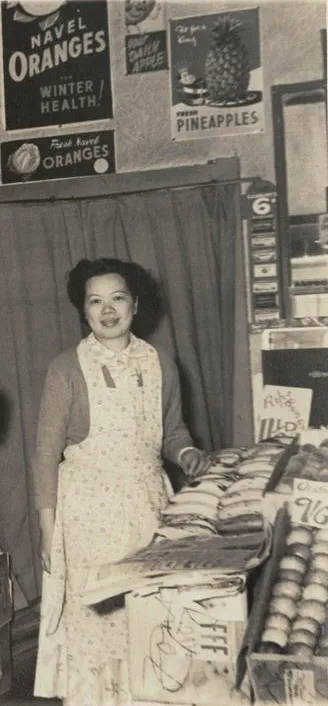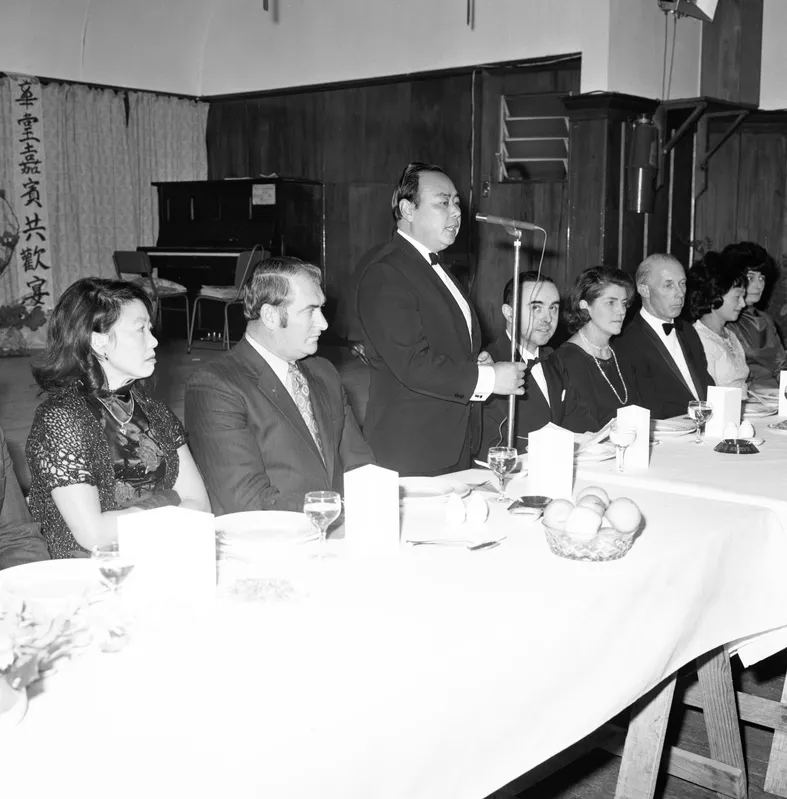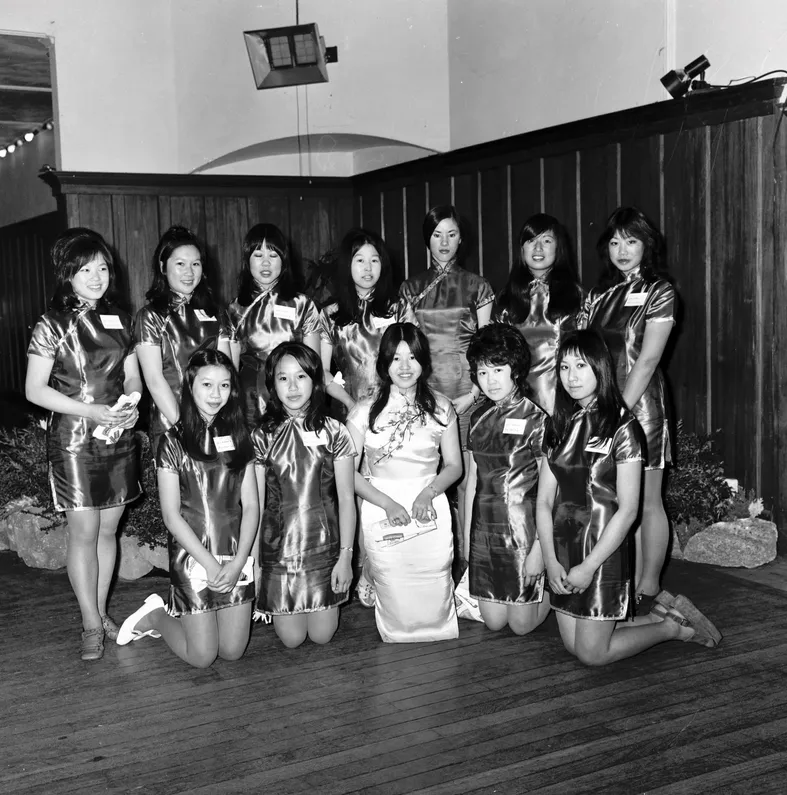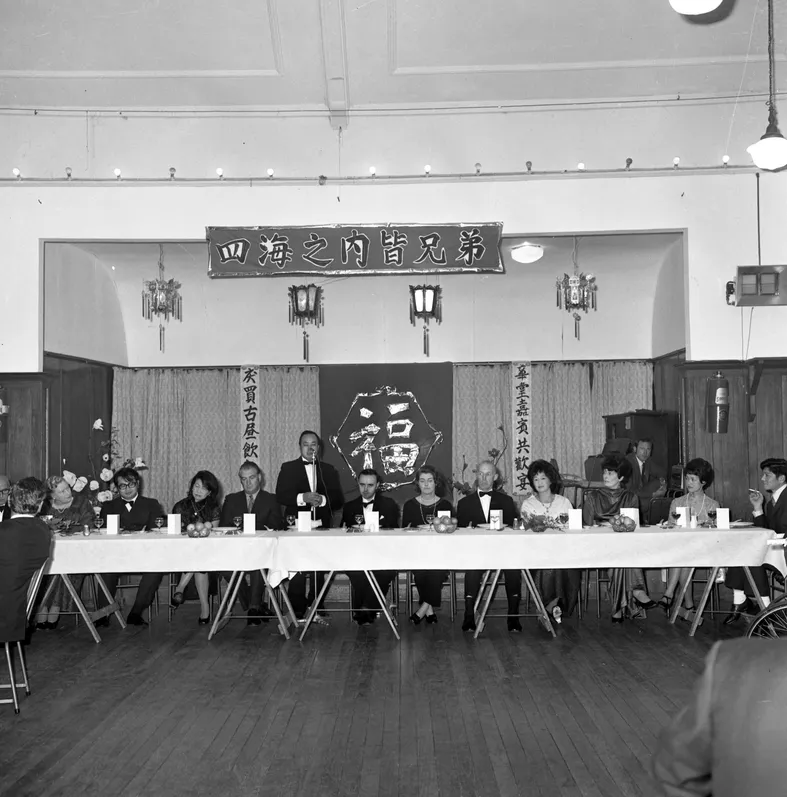By Michael Kingsley, Digitisation Technician for New Zealand Micrographic Services
As a digitisation technician, I am part of a team that scans tens of thousands of records and photographs for museums and cultural institutions allowing me to peer into a past, though to contribute to it wasn't something that I thought I would ever do as part of my job. So when I came across a packet of negatives from South Canterbury Museum that contained a number of glamorous shots of unnamed Chinese community members from Timaru, I seized upon the opportunity to enrich these records.
To give some context, I am a second-generation Chinese New Zealander. My pópó (婆婆/grandmother) emigrated to Timaru from Hong Kong in 1951 to join my grandfather who had lived in Canterbury since the late 1910s. Plagued by civil unrest, war and invasion, China experienced a mass exodus in the late 19th and early 20th century which saw tens of thousands of Chinese immigrants arrive on New Zealand’s shores to start new lives. As I’ve gotten older, I’ve become incredibly interested in the stories of Chinese families who have lived in South Canterbury for generations; stories of hardship, determination, and most importantly, family.

The impact of Chinese immigrants on the development of South Canterbury has been evident since the early European history of the region, but to me it seems historically under-acknowledged in the South Island’s major institutions. You can imagine my surprise, then, when a packet of negatives from the South Canterbury Museum came across my desk, containing images from a Chinese banquet in 1971 at the Caroline Bay Tea Rooms in Timaru. Even more surprising was that I immediately noticed a familiar face positioned at the centre of the banquet table, standing next to Mayor Ray Bennett, addressing those in attendance. It was Paul Lowe (劉沛湖), someone I used to regularly visit in Timaru as a young child.

The Lowe family were pillars of the Chinese community in Timaru, and their roots in South Canterbury stretch back as far as 1919. The Lowes would be well-known to Timaru locals as their name adorned the prominent grocery, Lowe’s Supermarket, as well as Paul himself being known by many through his involvement in charity and volunteer organisations. The Lowes, and particularly Paul, became a shining example of Chinese assimilation into Pākehā culture.
Though I immediately recognised Paul, I did not recognise any of the many other faces in the negatives. I consulted the South Canterbury Museum’s curator, Tony Rippin, and NZMS Southern Regional Manager, Stephen Hardman, for permission to take low-resolution copies of the negatives and show them to my family and some members of the Chinese community still in Timaru to see if we could put some names to these faces at this mysterious Chinese event.

Over several months, thanks to my mother and many members of the community we keep in contact with, we were able to identify every single Chinese person in the series of negatives. Something we were not expecting was that my Aunt Sandra was able to track down Ray Bennett, the ex-mayor of Timaru who was present at the banquet. He remembers that it was a delicious fifteen-course banquet to raise funds to purchase four Chinese carved screens for the Aigantighe Art Gallery. Carved screens or pingfeng (屏風) are decorated panels that often depict Chinese mythology, landscapes, and royal life.
The information we uncovered holds special significance for my family and the descendants of those featured in the negatives. While it may not capture the attention of the wider public, its preservation by an institution like the South Canterbury Museum is invaluable, as it brings our shared history to light and honours our heritage. I will never forget the way people’s faces lit up the entire room when I showed them copies of the negatives, especially my mum’s. Every time mum and I visited the South Canterbury Museum during my childhood, she would always leave, asking out loud, “Where is the Chinese history?”, and often left feedback cards to the museum expressing her feelings about the under-representation of the Chinese community. For mum, the museum was a direct expression and reflection of the region itself; to have no mention of Timaru’s immigrant communities and their contribution to sustaining the region was disappointing. She described it to me as “feeling invisible”, as if we, our families, and our community never existed, which reflected the complex history of the region.
This is the major reason why I felt it was important to gather and present the context of these negatives to the South Canterbury Museum - to ensure the community feels seen; acknowledge that times are changing, and communicate that we should be proud of our history. I hope that we continue to see increased inclusion of immigrant and minority communities in exhibitions, galleries, and archives. I believe that the present surge of material being digitised by companies like NZMS can play a significant role in helping these communities access and preserve their histories.

Acknowledgements
Special thanks to my Pauline (my Mum), Sandra Ning, Michael and Robyn King, Delicia Lowe, Jennifer Yee, and the incredible work of Ruth Lam, Beverly Lowe, Helen Wong, Michael Wong, and Carolyn King in their book The Fruits of Our Labours: Chinese Fruit Shops in New Zealand, Vol. 1.
More photos
If you wish to see more photos from this collection, see here
